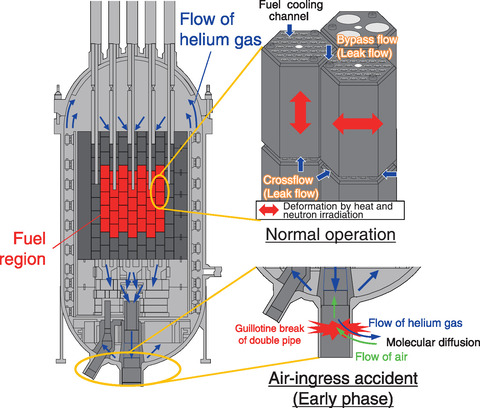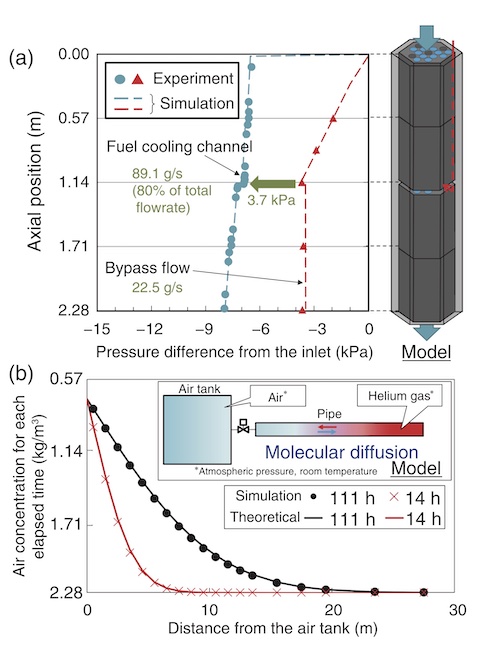
Fig.6-2 Illustration of the thermal-hydraulic phenomena in the HTGR

Fig.6-3 (a) Model and results of the leak flow simulation and (b) model and results of the molecular diffusion simulation
We are developing high temperature gas-cooled reactors (HTGRs) with inherent safety features for the multi-purpose use of nuclear energy. The air-ingress accident causing the graphite structure oxidation inside a reactor is one of the specific accidents in HTGRs. It is important to predict the onset time of the natural circulation in the reactor following the air-ingress in the safety analysis for the accident. However, the safety analysis has been performed in a conservative manner, assuming the onset time of the natural circulation to overestimate the amount of graphite oxidation due to the difficulties in evaluating the flow resistance and the air concentration distribution. Adjusting the conservativeness in the evaluation method and accurately predicting the delay of the onset time of the natural circulation will further improve the economic performance of the HTGR while keeping its safety features. The present study develops an evaluation method of the air-ingress behavior during the air-ingress accident in the HTGR using a nuclear system analysis code (RELAP5) by utilizing experiences on high temperature engineering test reactor (HTTR) construction.
The leakage flow in the HTGR is observed as shown in Fig.6-2, which depicts the helium gas flow through the gaps between the graphite blocks deformed by thermal expansion and neutron irradiation avoiding the fuel cooling channel. The temperature and pressure loss distributions at the fuel cooling, bypass flow, and crossflow channels must be precisely evaluated for realistic evaluations of the leakage flow and the fuel temperature. The code was improved by installing the pressure loss evaluation models formulated by previous experiments and the detailed heat transfer distribution of radiation. A model was newly installed to the code to treat one-dimensional molecular diffusion to predict the air concentration in the reactor in the air-ingress accident.
The simulation results were compared with the experimental results and theoretical solutions to validate the developed method. Fig.6-3(a) shows model and the results of the leak flow simulation. The comparison of the simulation and experimental results obtained for a mock-up test composed of four piled blocks simulating fuel cooling, bypass flow, and crossflow channels showed a good agreement of the pressure loss in the crossflow with the experimental results. Fig.6-3(b) illustrates the simulation model and results for the validation of the molecular diffusion model. The calculated air concentration was compared with the theoretical solution in the air-helium mixing process by molecular diffusion between two volumes initially filled with each gas. The results agreed with the theoretical solution in the range of ±2% for the initial air concentration.
The evaluation model regarding the local three-dimensional natural convection phenomena will be developed for further development of the evaluation methodology.
(Takeshi Aoki)
<Previous: 6 HTGR Hydrogen and Heat Application Research | Next: 6-2>